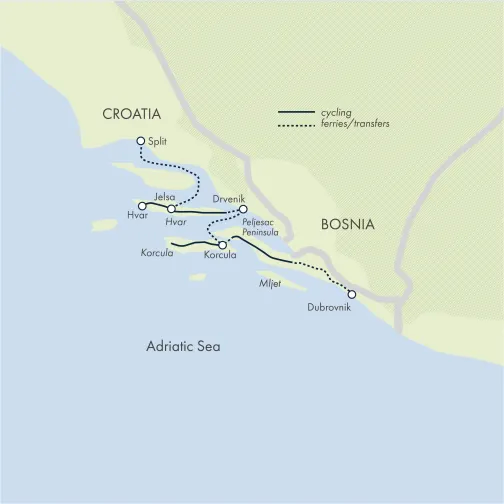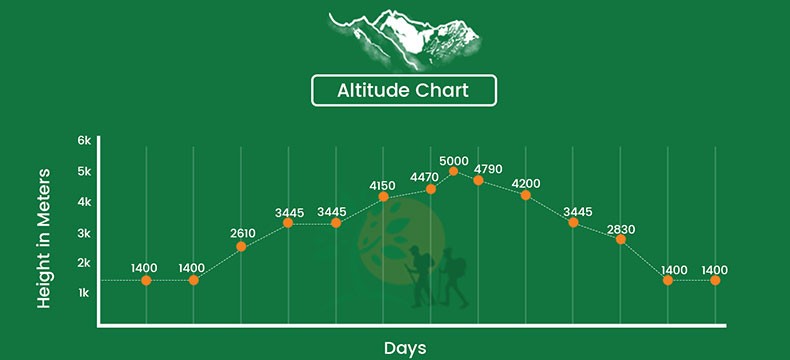Difficulty
Moderate
Duration
11Days
Max Elevation
3850m (At Kyanjin Gompa)
Group Size
2-8
Accommodation
Teahouse
Transportation
Teahouse
Start / End
Kathmandu/ Kathmandu
Difficulty
Moderate
Duration
11Days
Max Elevation
3850m (At Kyanjin Gompa)
Group Size
2-8
Accommodation
Teahouse
Transportation
Teahouse
Start / End
Kathmandu/ Kathmandu
At present, Langtang is the third most popular trekking area in Nepal, after the Annapurna and Everest regions. This fabulous trek, a perfect combination of moderate and rigorous walking, leads to the high alpine valley with the backdrop of high, snow-capped peaks. In the spring, this place is alive with wildflowers. Here you will find peace and serenity amidst the Buddhist culture.
With its scenic valley and impressive gorge, affording views extending all the way to the Annapurna, it is no wonder this is such a popular place to trek. Langtang Valley is situated directly north of Kathmandu in the Central Himalayan Region. This area was declared a National Park in 1976 and remains the second largest national park in Nepal, covering a total of 1710 sq. km. of mountainous terrain south of the Nepal-Tibet (China) border.
The area offers a diverse range of cultures. The three main ethnicities living in the area are the Tamangs, the Yolmus, and the Bhotias, who all originated from Tibet, coming to the area beginning about 500 years ago and continuing until about the mid 20th century. In the southern section of the park, there is a small area of sub-tropical chestnut forest and a unique Sal forest. The hill forest (2000-2,600 m.) across the southern slopes of the park consists of Chirr pine, rhododendron, Nepalese alder, and oak. Moving north and higher, the Montane zone (2,600-3000 m.) comprises mainly mountain oak, which changes to silver fir, hemlock, and larch in the lower sub-alpine zone (3000-3,6000 m.). Throughout these zones, several species of rhododendron trees form a twisted and colorful backdrop. It is at 3,600-4000 m. that the juniper and rhododendron shrubs slowly fade into the expansive alpine grassland meadows. Here, the elusive snow leopard is still thought to comb the alpine heights for prey. The park is also well known for its populations of red panda, Himalayan black bear, wild dog, Himalayan thar, ghoral (mountain antelope) and more than 250 species of birds.
Above the tree line, the valley opens up into a classical glacial ‘U’ shape, bound to the north by the impressive Langtang Himal, beyond which lies Tibet. The major peaks include Ghengu Liru (Langtang II, 6571 m.), Langtang Lirung (7,425 m.), Kimshun (6,745 m.), and Shalbachum (6,918 m.) to the south. The Chimsedang Lekh forms a ridge of peaks, which includes Naya-Kanga (5,846 m.) and Gangchempo, Tilman’s beautiful Fluted Peak. Beyond is the Jugal Himal, which terminates in Dorjee Lakpa (6,980 m). And to the east, the upper meadows of the Langtang end in a massive mountain wall, forming the frontier with Tibet.
On arrival at Kathmandu Tribhuvan International Airport, you will be greeted by our staff, who will escort you to the hotel, where our Sherpa guide or the office staff will give you a brief orientation about the hotel, Kathmandu itself, trekking, and the do's and don’ts of the area. They will also review any additional information that you might require while in Nepal, including an overview of the next day's sightseeing tour. In the evening, you will enjoy a complimentary welcome dinner at one of the finest traditional Nepalese restaurants in Kathmandu, with the necessary transfer to and from the hotel by taxi, bus. Overnight in Hotel
Max Altitude: 1300m/ 4265 ft
After your breakfast, you will precede to Kathmandu Durbar Square, where you will tour the ancient palace, the temple of Kumari, hailed as the living goddess of Nepal, Hanuman Dhoka and Kasthamandav Temple with a guide knowledgeable about Nepalese history, architecture, and religion. From there, you will proceed by taxi, bus to the Buddhist site, Swoyambhunath Stupa, also known as the "Monkey Temple" because of its lively troops of resident monkeys. You will then visit Pashupatinath Temple, the holiest shrine for Hindus, situated on the banks of the holy Bagmati River, a popular cremation site. Before returning to the hotel, you will visit Boudhnath Stupa, a Buddhist pilgrimage center and home to many colorful gompas, or monasteries. Once back at the hotel, you will receive a briefing about the trek and have a chance to meet your guides and ask any last minute questions before tomorrow morning's departure. Overnight in Hotel
Max Altitude: 1300m/ 4265 ft
Duration: 07 Hrs
An early morning drive after breakfast will take you to Syabrubeshi. The bus ride takes you on a winding uphill and downhill road and passes many rural towns and farming villages. The bigger town en route is Trisuli Bazaar, which is in the sub-tropical zone. From here, the road climbs uphill to a cooler region, leaving the rice paddies behind as it passes by terraced fields of maize and millet. As the weather changes, the culture and the people begin to change as well. You then arrive at Dhunche (1,965 m.), the one and only major town of the Langtang area and the Rasuwa district. There's a Langtang National Park headquarters, where your trekking and park permit are checked by the Royal Nepalese Army, who serve as park wardens as well. From here, the journey continues downhill for 1-2 hours until you reach Syabrubeshi village for the overnight camp. Overnight at Teahouse/Lodge
Max Altitude: 1460m/4790 ft
Duration: 7-8 hrs
The trek from Syabrubeshi is quite pleasant, with a few uphill sections. The majority of the walk is, however, on a relatively level trail through terraced farm fields and villages. The trail descends and joins the path coming from upper Syabru at the Riverside Lodge from where the trail leads to cool forest in the gorge, following the rushing Trisuli River upstream. The walk is more or less an uphill climb in the cool shade of rhododendron and oak forests. After six hours trekking, you arrive at a small clearing that houses the Lama Hotel. Overnight at Teahouse/Lodge
Max Altitude: 2470m/8103 ft
Duration: 6 hrs
From Lama Hotel, morning walk for 2-3 hours leads you to Ghoda btable. Ghoda tabela is situated in the midst of a forest of pine, hemlock, and rhododendron. From here onwards, you will begin to feel the altitude. In Nepali, Ghoda tabela means “horse- stable.” In the early days, the people from Langtang and as far as Kathmandu use to trade with Tibet, brining large numbers of Tibetan ponies to the town, as Ghoda tabela is an ideal place for the cattle and horses to graze. Ghoda tabela has a lodge and a park warden's barrack, where your permit is checked once again. From Ghoda tabela, the trek continues for a few short hours on the trail to Langtang and its beautiful valley. You walk through the cool shade of the alpine woods for an hour, following a small stream and leaving the tree line behind. The path leads uphill for an hour, and then follows a gentle, gradual winding trail with a few ups and downs until it reaches the village of Langtang. (*Note: Langtang used to be a beautiful village and a beautiful campsite. But, a big avalanche triggered by the mega earthquake of 7.8 Magnitude that hit Nepal on 25 April 2015, swept this valley leaving only rubble). Our journey for today continues to Mundu. Overnight at Teahouse/Lodge
Max Altitude: 3543m/ 11624 ft
Duration: 7 hrs
From Mundu, the morning’s walk leads you on a level path for a short time before winding uphill for a few hours through prickly blueberry and alpine shrubs. You will encounter a Mani prayer wall, which you should walk around in a clockwise direction, following the local culture and religion. As your walk leads you further east, the valley opens up and the walk continues on a grassy meadow with views of numerous snow-capped peaks in the distance. The walk is more pleasant, but can seem more difficult because of the altitude gain as you approach Kyanjin Gompa for the overnight stop. Kyanjin Gompa is a scenic, charming spot, with peaks looming in all directions. The closest peak that you can see is the Langtang Lirung (over 7,000 m.) and its icefall, which is not too far from the campsite. Kyanjin Gompa is a small monastery located on the top of a ridge formed by a glacial moraine of rocks and boulders. Within the Kyanjin Gompa area, there are more than 20 lodges and a cheese factory. Overnight at Teahouse/Lodge
Max Altitude: 3850m/ 12631 ft
Duration: 04 Hrs
Spend today at your leisure, a very well deserved rest day. After breakfast, you can go for a short walk to the nearby hill called Kyanjin RI (4,700 m.), which gives you a panoramic view of the surrounding snowcapped peaks. Or, alternately, take the time to visit the cheese factory or simply look around the village. Overnight at Teahouse/Lodge
Max Altitude: 3850m/ 12631 ft
After a wonderful time at Kyanjin, the journey continues back on the same trail to the Lama Hotel, a small settlement in the midst of the forest on the bank of the upper Trishuli River. Overnight at Teahouse/Lodge
Max Altitude: 2470m/ 8103 ft
Duration: 7 hrs
Trek back through the same route with the overnight at Syabrubeshi. Overnight at Teahouse/Lodge
Max Altitude: 1460m/ 4790 ft
Duration: 6-7 hrs
This morning after breakfast, you will board the bus for the six-hour scenic drive to Kathmandu. Overnight in Hotel
Max Altitude: 1300m/ 4265 ft
Duration: 7-8 hrs
Keep the departure time of international flight in mind, and make sure to keep your confirmed air ticket and passport handy! Our staff will take you to the airport for your final departure from beautiful Nepal.


Curate trips with a blend of vibrant local festivals Immersing yourself in the heart of cultures and experiencing the rhythm of life in celebrations.
Do what locals do.
Enhance your experience with add-ons that let you explore and learn about the life of the local artisans and commoners.

